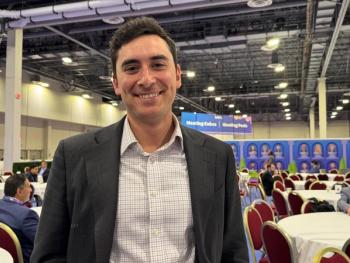
Leslie Harrold, MD, Speaks on the World's Biggest Rheumatoid Arthritis Registry
For Dr. Harrold, studies of the expansive data set underscore a need for an emphasis on the individual characteristics that make each RA case unique.
“I’m very passionate about rheumatology because we have the ability to care for patients over the long term. We really are partners in their care, we walk the journey with them,” Leslie Harrold, MD says. “Some patients we can heal, some we can’t, but we’re always there to work with them and try to give them the best care and the best quality of life. I think we really are trying to be partners with them and work collaboratively so they can have the best care and the best outcomes possible.”
At the 2016 American College of Rheumatology Annual Meeting in Washington, DC, Harrold was on hand to present findings from the
Dr. Harrold’s team displayed
The poor prognosis factors her team examined were functional status, or how well an RA patient can function in daily life; seropositivity; x-rays that showed erosive disease; and extra-articular manifestations, such as RA lung disease/nodules or Sjögren’s syndrome.
“In 2008 the ACR did tell rheumatologists they need to consider poor prognostic factors when discussing patients’ treatment regimens. In the subsequent ACR treatment guidelines, they took that out,” she says, “So we did analysis to see if physicians are using poor prognosis factors to determine whether they initiate a biologic or change any therapy to accelerate care.”
When adjusting for baseline CDAI scores and disease factors, there was no significant relationship between poor prognosis and new DMARD use.
“We found that, no, physicians aren’t taking into account poor prognoses when making treatment decisions. We also looked at one-year outcomes in those who had poor prognoses and found that they did worse, they had diminished change in disease activity scores,” Harrold explains.
“It really suggests that we should focus in on those with poor prognosis and see if we can do things to prevent them from being unemployed, or unable to work,” says Harrold of this examination. “This is a subset of the RA population that we should probably give intensive treatment to, to prevent those adverse sequelae. Not only clinical adverse sequelae, but also in their social environment, like being able to work or function.”
For Dr. Harrold, these findings underscore a need for increasingly close and collaborative treatment of patients, with an emphasis on the individual characteristics that make each RA case uniquely challenging.








































